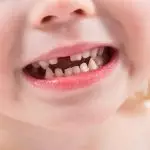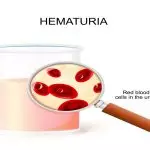
My Child is Diagnosed With Juvenile Dermatomyositis – What Should I Know by Dr. Sagar Bhattad
10 min readWritten by Sindhuja Prabhu


Children with a rash are not an uncommon sight. Frankly, we don’t give a second thought about it unless the rash is very evident or we know the medical condition. When it is your child suffering from such rashes all over their body, you ought to know more about the condition. While rashes in children are common, sometimes rare conditions such as Juvenile Dermatomyositis can be responsible for this condition.
Has your child been suffering from skin rashes for no valid reason? Did the doctor diagnose it as Juvenile Dermatomyositis? If you are nodding yes, then you are bound to be worried and unsure about what to expect. Here is everything you need to know about this rare disease that is affecting your child.
In This Article
- What is Juvenile Dermatomyositis?
- How Common is Juvenile Dermatomyositis?
- Causes of Juvenile Dermatomyositis in Children
- Symptoms of Juvenile Dermatomyositis in Children
- How is Juvenile Dermatomyositis Diagnosed?
- Late Diagnosis of JDM in Children
- Juvenile Dermatomyositis Treatment in Children
- Side Effects of JDM Treatment
- FAQ’s
What is Juvenile Dermatomyositis?
Juvenile Dermatomyositis, more commonly known as JDM, is an autoimmune disease that affects the skin, muscles and the blood vessels. It is not a very common disease. In fact, it is very rare and affects only 3 in one million children per year.
It shows up as a rash on the skin and some muscle weakness. The large muscles around the neck, shoulders, and hips are affected to such an extent that the child can even find it difficult to get up from a seated position- be it from the floor or even a chair. It can also make it difficult to climb stairs, get in or out of a car, or even do something as basic as brushing your hair.
JDM causes inflammation in the muscles and blood vessels. Inflammation is the immune system’s way of protecting the body from foreign invaders and infections. The immune system starts attacking the body’s muscles and skin, instead of protecting it. This happens when the immune system mistakes the muscles and skin to be foreign invaders.
It is an autoimmune disease, the reason for which is still unknown. It is seen to affect people of all ethnicities equally. However, it seems to affect more girls than boys.
How Common is Juvenile Dermatomyositis?
Juvenile Dermatomyositis is not a common disease at all. It affects less than 5 children in a million. It is common among children between the ages of 2 and 15. However, it is more common in children above the age of 7. There are also chances for it to continue into adulthood.
Some studies suspect it to be seasonal as it seems to be more prevalent in the Summer and Spring seasons.
Causes of Juvenile Dermatomyositis in Children

Juvenile Dermatomyositis is classified as idiopathic inflammatory myopathy because the exact causes are still unknown. While some researchers suspect it to be seasonal, some doctors believe it could be environmental. Exposure to certain environmental factors like a virus or an infection can affect young children.
As of now, the only known fact about this disease is that it is an autoimmune disease where the immune system attacks the body instead of protecting it. This happens when the immune system mistakes the healthy cells for foreign invaders and tries to protect the body from these assumed “invaders”.
There can be certain “triggers” that can start the immune system on this self-destruction journey. Unfortunately, the immune system may not stop once the trigger ceases to exist.
Symptoms of Juvenile Dermatomyositis in Children

Though JDM affects the muscles and prevents children from doing many of their regular activities, it does not cause much pain. If there is severe pain in the muscles, most likely it is a symptom of some other health issue that has similar symptoms. JDM causes the muscles to “weaken” and occasionally “pain”.
So, what are the tell-tale signs that your child indeed has Juvenile Dermatomyositis? Here are a few to watch out for.
1. Skin
The skin is the biggest organ in the body and when it is affected due to an illness, it cannot be missed easily. JDM mainly affects the skin, causing inflammation. The inflammation shows up as a rash that can be red or purple color in the following areas.
- Eyelids(one of the first areas to be affected)
- Cheeks(one of the first areas to be affected)
- Fingers – reddish swelling over the knuckles (Gottrons papules)
- Elbows
- Knees
- Chest
- Back
- Nails
2. Muscles
As mentioned earlier, JDM affects muscles too. You may notice that the muscles in the following areas of the body weaken around the same time as the rashes appear. Sometimes it can take even months for JDM to progress this far.
- Neck
- Back
- Shoulders
- Upper Arms
- Thighs
- Stomach
Juvenile Dermatomyositis will affect both sides of the body equally. As a result, it can not only cause weakness but can impair a lot of movements too. Your child might find it difficult to do something as simple as sit in and get out of a chair on their own as their torso and arm muscles are weak. They may not be able to climb stairs or even run around like other children.
3. Other Symptoms
Some of the other symptoms include
- Weak voice
- Trouble swallowing
- Hard white lumps just under the skin surface
- Spiking fever
- Pain in muscles
- Fatigue
- Falling more often than usual
Weakness of voice and trouble swallowing is a sign of severe disease and you must consult your doctor urgently if these symptoms are noted.
It is normal for a child to feel tired and weak on some days. Just like us adults, they may not want to play with their friends on some days. They may find it difficult to even get up and carry out their day-to-day activities. Even a viral infection can cause such weakness in them.
However, if you notice that your child is weaker than usual for a prolonged period of time; if they are not showing interest in playing with other children or outdoors, and if they are covered in rashes; then it is a strong indication that they have a health issue that needs immediate attention.
Most of the symptoms mentioned above can be associated with a common viral infection, which can be very frequent in a child’s life. If the symptoms don’t subside like they ought to with a regular viral fever or infection, you need to consult a doctor immediately.
[Read : Systemic Lupus Erythematosus(SLE) in Children]
How is Juvenile Dermatomyositis Diagnosed?

Timely diagnosis of JDM is very important to catch the disease in its early stage. If left undiagnosed or untreated for a long time, it can cause severe complications as it involves the major muscle groups as well as the skin.
A doctor will diagnose JDM in the following manner:
- They will ask for a complete medical history of the child and the symptoms that concern you as a parent.
- A physical examination will help them understand the impact on the muscles and also narrow down on the affected muscle groups.
- A set of tests will help find out the presence of antibodies, muscle enzymes, and inflammation indicators in the bloodstream.
- An MRI (whole-body MRI) to look for affected muscles will help assess the extent of inflammation in each part of the body.
- A biopsy of the skin or muscle tissue to assess the extent of the damage if any.
Other Tests to Diagnosis JDM

After these initial sets of tests, the doctor might ask for more to confirm the diagnosis and narrow down the areas of inflammation. Some of the other tests you might have to take are:
- EKG: Electrocardiogram to analyze the heart’s electrical activity.
- Echocardiogram: This test is done to analyze the heart’s functioning.
- Pulmonary Function Tests: This test is done to ensure the lungs are safe.
- X-Rays: X-Rays to view images of bones, organs, and tissues.
- Swallowing Study: This is done to evaluate the functioning of the muscles in this area.
- Electromyography: This is done to check for nerve or muscle damage.

Tests from the list above are not taken unless the doctor suspects something or wants to rule out inflammation or damages in those body parts. Such damages can happen if the JDM is not diagnosed in time. A delay can cause damage to the muscles and the skin tissues, thus requiring tests to assess the spread of the disease.
Since the symptoms of JDM, when mild, can be overlooked or confused with other diseases, detection can take time. When the doctor realizes a lot of time has passed since the onset of the problem, they will want to know how far the disease has affected the child.
Late Diagnosis of JDM in Children

When JDM is not diagnosed in its early stages, it can progress and cause some concerning complications like:
1. Calcium Deposits
Some children can have calcium deposits under their skin. These deposits will feel hard like lumps just under the skin surface. When these deposits happen in the joints, they can cause a lot of pain, discomfort as well as affect growth.
Calcium deposits can break through and drain on their own. However, sometimes these can get infected. So, if you notice such calcium deposits turning red or beginning to drain, you need to keep the doctor informed.
2. Contractures
JDM is known to cause pain and stiffness in the joints. When this is not treated, the stiffness can progress and affect the growth of the child. The muscles can shorten due to scarring of the tissues or calcium deposits. Over time, the joints will feel pulled and not develop as expected. These muscles can remain bent at a certain angle.
3. Ulcers
When the tissues around the blood vessels break down, it can result in some serious ulcers. While some can be painless, sometimes they can be very painful, especially for a small child.
Though not common, these ulcers can occur in any part of the gastrointestinal tract. These ulcers can occur anywhere on the skin and look like craters. This can not only scare the child but can be very painful too. Such ulcers do not scab easily and take a long time to heal. The child will be in discomfort and pain the entire time.
If you notice such ulcers, inform your doctor immediately. If left untreated, your child will struggle to swallow, eat, and might even pass bloody stools, which can again be very scary for a small child.
Juvenile Dermatomyositis Treatment in Children

Since it is an autoimmune disease, there is no permanent cure for JDM. Doctors will try to first treat the symptoms and prevent further damages to various parts of the body. The treatment will vary depending on the severity of the disease as well as the extent of damage it has caused in the body.
The main goal will be to control inflammations and restore mobility to the affected muscles by strengthening them over time. This is not something the doctors can rectify overnight. If the muscles are very weak, your child will need therapy to help them get back to their active self.
Some of the medications the doctor will use are:
1. Corticosteroids
A type of steroids prescribed to help control inflammation. Prednisone is the most commonly prescribed steroid for such health issues. The dosage and duration of the steroid treatment will depend upon the severity of the disease.
The corticosteroids will help control and reduce inflammation, reduce pain and strengthen the muscles slowly. It can be oral steroids or steroid injections. Injections are generally given if a particular spot is affected, while oral steroids will be given if the inflammation is in multiple parts of the body.
[Read : Steroids in Children]
2. Immunosuppressants
An autoimmune disease is where the immune system is responding strongly. Immunosuppressants like cyclosporine, methotrexate, azathioprine, or tacrolimus are given to quieten the immune system to prevent it from overreacting. This is done to preserve what is left of the immune system.
3. IVIG
Intravenous Immune Globulin helps to control the harmful antibodies that attack the body. IVIG effectively controls the antibodies the body produces to attack foreign invaders. In the case of an autoimmune disease like JDM, these antibodies are attacking the body’s healthy cells. So the IVIG will prevent this from happening.
4. Other Medicines
Various other medications can be prescribed depending on which part of the body is under attack. If a certain organ is under attack, the doctor will prescribe medicine to protect and help the body part to recover and protect itself.
Side Effects of JDM Treatment

Now, the next question for any concerned parent would be – how will this treatment affect my child? What are the side effects to anticipate when my child is treated with steroids and other such strong medications?
Some of the side effects your child might experience are:
- Weight gain
- Increased appetite
- Mood swings
- Increased risk of infections
- Swelling in the face
- Increase in facial hair
- Nausea and vomiting
- High blood pressure
- Fluctuations in blood sugar levels
If any of these side effects are seen and the JDM is still not under control, the doctor will reduce the dosage first. Then they will try to prescribe other medicines to help with the condition.
Your child will be closely monitored and regular tests will be taken to ensure the corticosteroids and immunosuppressants do not cause any damage to the organs in the body.
It is important to keep a close watch on your child when they are being treated for JDM. If you notice any change or a negative impact on your child, you need to inform the doctor immediately. Even if the medicine is helping the JDM but is having a minor side effect, ensure you inform the doctor immediately. Let the experts decide if it is mild, can be ignored or not.
Not everything is gloomy! Children who are treated timely, recover and do well. They attend normal schooling and grow into healthy and productive citizens. It is therefore very essential to treat children with JDM appropriately and timely. A Pediatric Rheumatologist would be of great help in this situation.
FAQ’s
1. Can Juvenile Dermatomyositis (JDM) be Prevented?
Unfortunately, no. Since it is an idiopathic myopathy and an autoimmune disease, it is difficult to prevent it. When you don’t know how or why a particular disease occurs in the first place, it is not possible to prevent it. Unless your child shows some of the classic symptoms mentioned earlier, it is difficult to even diagnose JDM in your child.
2. What is the Long-Term Outlook For Children With JDM?
Timely diagnosis and closely monitored treatment can help the child with JDM. However, for some children, the treatment may not be as effective as expected. They might have to be on strong medicines for longer or might even suffer permanent weakening of the muscles, calcium deposits under the skin, or even cardiopulmonary issues. The majority of children who are treated on time do well and lead a near-normal life.
Conclusion
Juvenile Dermatomyositis is not a common condition. When the doctor diagnoses your child with this condition, your world might come crashing down around you. It is definitely tough to handle when you don’t have other parents to talk to and share experiences with.
It is important to find a doctor you can trust and let them help you. When you are not sure about what to do, best leave it to the experts. With timely diagnosis and close monitored treatment, your child can be helped well in time.

Sindhuja Prabhu,M.Sc (Psychology),PGDBM
Sindhuja, a mother of two, is an obsessive mom with a keen interest in psychology, especially child psychology. Her quest for knowledge and way with words led her to become a passionate content writer. She transformed her love for writing into a full-fledged career which incidentally also turned up being the perfect stress buster for the last 5 years.Read more.
Responses (0)
Want curated content sharply tailored for your exact stage of parenting?
Sponsored content
Discover great local businesses around you for your kids.
Get regular updates, great recommendations and other right stuff at the right time.











